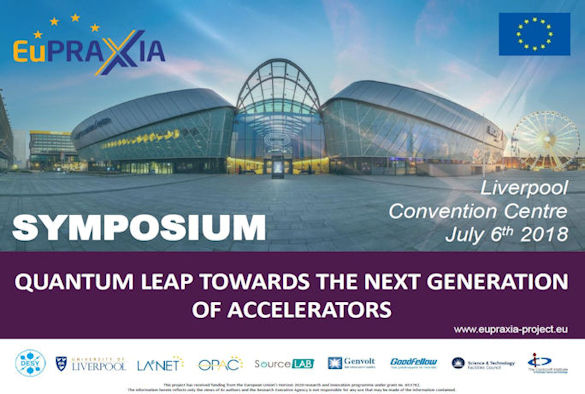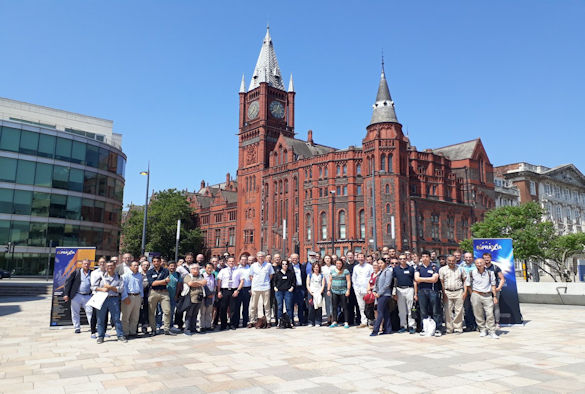
Scientists from across Europe are in Liverpool this week to discuss the future of accelerators, advanced laser technology, and industry opportunities alongside a discussion of developments in the EuPRAXIA Horizon2020 Design Study, developing the conceptual design of the world’s first high-energy plasma-based accelerator with industry beam quality
The ‘Quantum Leap Towards the Next Generation of Particle Accelerators’ Symposium, organised by the University’s Department of Physics, is taking place on Friday, 6 July at the Liverpool Convention Centre.
It will feature talks about industry opportunities and large scale infrastructure in plasma acceleration, an industry exhibition highlighting the latest technologies and market-ready products and a poster session showcasing the results of EuPRAXIA’s design of a new 5 GeV electron accelerator facility.
The Symposium will feature specific sessions for over 150 students from local secondary schools to find out about ground-breaking accelerator science taking place here at Liverpool and the Cockcroft Institute. The talks will be streamed live on http://www.eupraxia-project.eu/live-streams.html.
A range of interactive demonstrations which help explain accelerator science through marshmallow waves, Gauss rifles and the Surfatron – a game designed to demonstrate the concept of plasma wakefield acceleration – will be available for participants to interact with.
Professor Carsten Welsch, Head of the University’s Department of Physics, said: “Accelerator science has made possible the digital revolution. This Symposium brings together leading scientists from across the world to discuss the latest developments in accelerator science and consider the potential benefits of novel accelerators for the medical, transport, energy and science sectors. “
EuPRAXIA is designing an infrastructure that would reduce the size and cost of accelerators to make them more accessible to industry. These accelerators could be a thousand times more compact than the current approaches opening up the opportunity to use the beams for new types of application.

.”